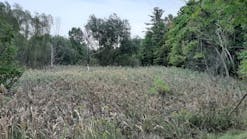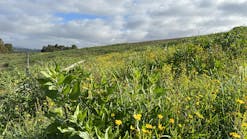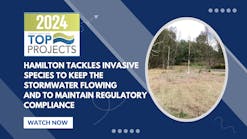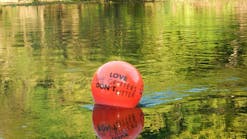The US is a nation of builders and rebuilders. Each year for the last several, according to the Natural Resources Conservation Service, we’ve developed more than 2 million ac. in the continental US, transforming a bit more than twice the area of Rhode Island from forest, cropland, and pastureland into urban, suburban, and industrial landscapes.As the ESC community knows only too well, the activities involved in building and the dramatic increases in impervious surface in many communities have tremendous implications for water quality. Making people aware of the problems and encouraging compliance has been a long and often painful process, and one in which the International Erosion Control Association has consistently led the way. Of course there are other effects of rapid development as well, from degraded air quality to potential traffic congestion to noise pollution, that are usually dealt with piecemeal by various industries, agencies, and interest groups. One organization, the US Green Building Council (USGBC), is attempting to call builders’ attention to many of these issues with a comprehensive building certification program.IECA has long advocated a proactive stance for minimizing accelerated erosion and the resulting sedimentation, and legions of its members are addressing construction-site sediment control. This is also a prominent facet of USGBC’s certification program – “Erosion & Sedimentation Control” is in fact the very first item on its certification checklist – and it’s refreshing to see another prominent national organization shaking its head in agreement and moving to align itself with IECA’s core values. The USGBC has set itself goals to “transform the building market” and “change the way buildings are designed, built, and maintained” by promoting projects and practices that are not only environmentally responsible and sustainable but also profitable. Designers and builders who have gotten on board with practices the USGBC recommends – perhaps prompted to do so by clients who specifically request them – have generally found economic benefits as well. By boldly using words in its title and self-description that often are associated with groups who don’t necessarily see eye to eye with the development community (“green” is one; in some contexts, “sustainability” is another), the USGBC is in some sense reclaiming them and moving them into the mainstream of development. The mainstay of the USGBC strategy is the LEED Green Building Rating System (LEED stands for Leadership in Energy and Environmental Design). LEED certifies new or renovated buildings’ performance, measuring a project from beginning to end against comprehensive, standardized, and well-defined criteria. A fundamental requirement for certification is paying attention to grading practices and site disturbances; the certification process starts by examining the siting of a building and the efficiency of practices (e.g., ESC) used during construction, as well as the site’s access to public transportation and its preservation of open space. A project also earns points toward certification for its handling of stormwater, its landscaping (for water efficiency and heat-island reduction), its energy performance (including efficiency and use of renewable energy sources), the materials used to build the structure (local and recyclable are preferred), and the quality of the finished building’s indoor environment as measured by such things as low-emitting paints and carpets. The USGBC members come from throughout the building industry: architects, engineers, developers, and product manufacturers, as well as people from financial institutions and government agencies. By providing and promoting a good overview of the many steps necessary for sustainable building, the council draws on the long-established values and expertise of such organizations as IECA – in addition to those with specialized knowledge in other such key LEED areas as renewable energy, construction waste management, and architectural design – for in-depth knowledge. As certification becomes more widespread and accepted – as it seems to be, with hundreds of high-visibility public and commercial buildings applying for certification – the council and LEED will be good allies for ESC professionals. LEED covers many facets of our industry, from construction to landscaping to stormwater management, and offers another avenue not only for raising awareness of the need for proactive erosion and sediment control but, importantly, putting them in an easily understandable context.





